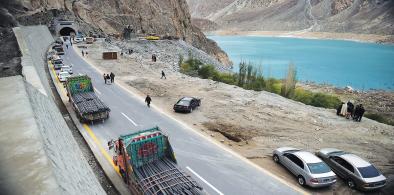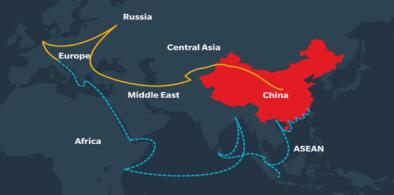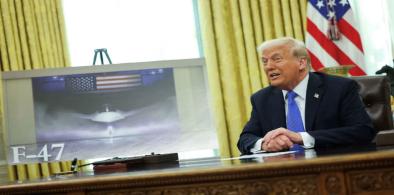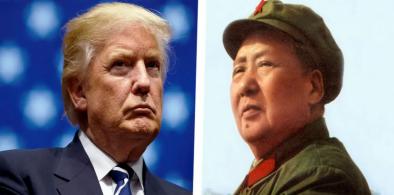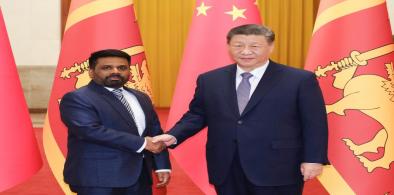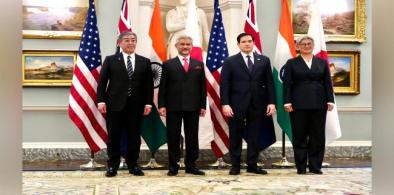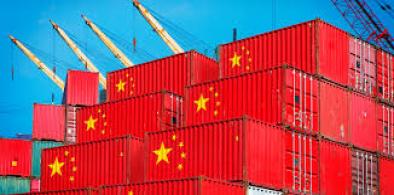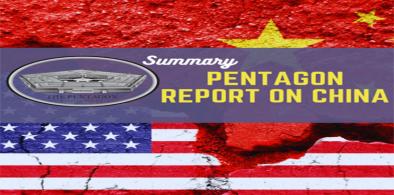While the opportunity is vast, the risks are real. Without transparency, environmental safeguards, and strong domestic ownership, the Dhaka-Beijing river cooperation could backfire. A 50-year master plan must be rooted in Bangladesh’s ecological realities, ensuring local participation, sustainable practices, and equitable governance. Otherwise, well-intended cooperation could become a boomerang, undermining long-term water security.

China's Reactions To Terror Incidents: State And Social Media Echo Clear Bias For Pakistan
The two incidents in India and Pakistan over the course of a week have shown that the coverage of terrorism by the Chinese media ecosystem largely reinforces the state’s foreign policy narratives and preferences for alignment in South Asia. Pakistan emerges as a clear preference for the public, which is reinforced by commentators and opinion makers on non-state news media platforms.
China’s CPEC Extension To Afghanistan Has Security Implications For Region
CPEC 2.0 is expected to serve as a major leverage tool for China to access Afghanistan’s untapped natural resources and enhance connectivity to Pakistan and Central Asia. However, for Afghanistan, the initiative may be more of a challenge than an opportunity. Countries such as Sri Lanka and the Maldives have already faced severe economic consequences from poorly structured Chinese-funded projects.
China's New Great Game: How Beijing is Redrawing South Asian Geopolitics
China's rise has, in the consensus view of most international relations scholars, fundamentally changed South Asia. The old, India-centric region is gone. Pakistan has tied its future to Beijing, seeing China as its ultimate guarantor. Bangladesh has played a smart game, using Chinese money for national development while maintaining its "friendship-to-all" foreign policy. The Teesta project shows Dhaka's new confidence in following its own national interest. For India, the challenge is immense, as it must now compete for influence in its own backyard.
From Sir Creek to the Arabian Sea: India's Trishul Military Exercise Is A Double-Edged Sign
India's increased naval exercises, combined with its Indo-Pacific ambitions and Western partnerships, indicate a shift from coastal defense to regional management. For smaller coastal states, such patterns can readily translate into worry, not from an impending threat, but from an inferred sense of power. When a major power operates near contested or shared spaces, the neighbors are obligated to interpret purpose through action.
India sets sail with Africa: Strategic maritime partnerships enhance Indian Ocean Region presence
A multilateral maritime engagement with African countries, AIKEYME, is an initiative to enhance interoperability with the region's navies. The maiden edition of the six-day exercise being co-hosted by Indian Navy and Tanzania Peoples’ Defence Force (TPDF) will be conducted off Dar-es-Salaam in mid-April 2025 and will include participation from Comoros, Djibouti, Eritrea, Kenya, Madagascar, Mauritius, Mozambique, Seychelles and South Africa.
The next-gen F-47 fighter will widen US-China power gap in Indo Pacific and beyond
Although much has been said and perceived about China’s growing military competition in closing the power gap, this move to unveil the ruthless and fearful F-47 and the other assets is meant to checkmate Beijing’s ambitions in the Indo Pacific and demoralise other enemies who still doubt America’s long-term military and economic resilience.
Elephant diplomacy: Myanmar's gift of elephants to Russian zoo has strategic significance
The elephant is not just an animal, it is a symbol of power, royalty, and diplomacy in the pages of history. Myanmar’s gift of six elephants to Russia is not just a simple gift, but an important strategic move in regional and global politics.
Dalai Lama takes on Xi, says he “seems to be” returning to Mao’s “oppressive policies”
Beijing - and therefore Xi - by virtue of his being in complete control of all affairs in the country have long been known to be determined to pick their own successor to the Dalai Lama, a portent that is profoundly troubling for some six million Tibetans inside Tibet and over 100,000 in exile outside, mainly in India.
Australia and India can show the collaborative promise of international education
Providing the ASHA workers employment would have a multiplier effect, especially through their empowerment. Imagine the extraordinary impact if a collaborative project, supported by both the Australian and Indian governments, were to train one million ASHA workers in India, using the online platform! It would be a true reflection of partnership and an unparalleled public diplomacy initiative.
American democracy in chaos: Trump's disruptive actions has echoes of Mao's Cultural Revolution
Mao's Cultural Revolution reverberations were largely contained within then 'Third World' China, causing only stray ideological ripples across its borders. In contrast, Trump's actions challenge the underpinnings of the post-war political, economic and social global architecture in a highly interdependent world.
Challenges and opportunities for Bangladesh in the Trumpian era: Will China ties affect relations?
Some speculate that Bangladesh’s pivot toward China, which has invested $23 billion in the country, may have influenced US policies towards Bangladesh. With China among Bangladesh’s key stakeholders, geopolitical considerations will play a significant role in Bangladesh’s energy security treaty negotiations with the US.
Sri Lanka propitiates China but continues balancing act with India
Sri Lankan missions abroad have been instructed not to attend any official functions of Taiwanese missions that operate as cultural, economic or educational offices or meetings attended by the Dalai Lama. However, until last year, several leading Buddhist monks of Sri Lanka had participated in religious functions and conferences together with the Dalai Lama
India's pivotal maritime role in maintaining a 'free and open' Indo Pacific
The 12th edition of Ex Milan, held in February 2024 at Visakhapatnam, in southern India, involved the largest-ever participation, featuring the navies of over 50 countries and nearly 20 ships.
Fishing in troubled waters of Palk Bay: Need to avoid spillover of Indian Ocean geopolitical competition
It was against this backdrop that the Embassy of the People’s Republic of China in Sri Lanka engaged with the fisherfolk communities in Northern Sri Lanka. During then Fisheries Minister Douglas Devananda’s visit to China—which coincided with the tenth anniversary of the Belt and Road Initiative (BRI)—China pledged Rs. 1.5 billion (Sri Lankan rupees) to bolster the fisheries sector in the Northern and Eastern Provinces.
Tariff and trade wars: India needs a new and different approach to China
The world, including the USA, too can’t suppress or coerce China militarily or with sanctions and tariffs. The raw fact is that China unilaterally dominates the world supply chain. To be counted, India needs to step up and become relevant in this supply chain
With eye on China, India enhances strategic border infrastructure with world-class construction
Fulfilling vital strategic/security imperatives for rapid military deployment against China and Pakistan and enhancing regional connectivity for the benefit of people of many border states, the distribution of the 75 projects is - 19 in Jammu & Kashmir, 11 in Ladakh, 18 in Arunachal Pradesh, 9 in Uttarakhand, 6 in Sikkim, 5 in Himachal Pradesh, 2 each in West Bengal and Rajasthan and one each in Nagaland, Mizoram, and Andaman & Nicobar Islands.
Dissanayake to woo China for economic help as Colombo continues balancing act
Observers speculate that a key focus of discussions in Beijing will be the purported ban on Chinese “research vessels” entering Sri Lankan ports that India wants. During his visit to New Delhi, President Dissanayake promised that not an inch of Sri Lankan territory would be given for any activity that could be considered inimical to India.
Pentagon Report on Chinese military modernisation: A wake-up call for India, Quad nations
The difference between the Chinese and Indian approaches is stark. While China is engaged in a frenzied military modernisation, the Indian defence establishment is absorbed in building statues, replacing iconic paintings and seeking mythological solutions to its current and future threats. Indian defence capability development has languished for too long. It needs to be in ‘mission mode’ in 2025.



